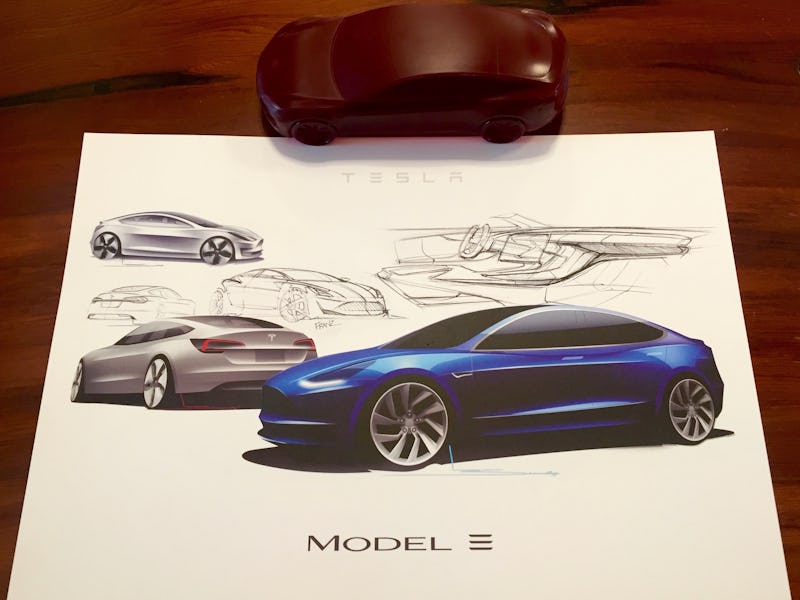On Thursday, a Tesla analyst at Morgan Stanley wrote a memo to clients saying that the Tesla Model 3’s “superhuman” safety systems will be ten times safer than normal cars. But there may be a catch.
Adam Jonas, an industry analyst at Morgan Stanley, wrote a note to Tesla shareholders today, letting them know what to expect out of the hotly anticipated Model 3. First reported by Electrek, the note gives Tesla’s safety systems a glowing review, something that matches up with the company’s already stellar safety record. But while Tesla’s autonomous and driver-assisted systems have the potential to significantly increase driver safety, Jonas’s note also hints at a glaring problem other automation experts and consumer advocates have raised: conditional autonomy could be dangerous.
Jonas writes:
To be clear, we are talking about automated driving (not fully autonomous driving) where the driver has a legal obligation to keep hands on the wheel at all times. The driver is still human… but with a ‘superhuman’ assist.
Automated, but not fully autonomous driving, sounds exactly like level 3 autonomy, the intermediate space between cars that assist drivers, and fully autonomous cars, which some experts see as a dangerous speed bump on the road to fully self-driving cars.
Jonas’s quote highlights the problem directly: the car is driving itself, but the driver still has to have their hands on the wheel, paying attention to the road. The problem is, people probably won’t do that. While Jonas is framing that level of autonomy as a positive, experts aren’t convinced. Level 3 autonomy might allow drivers to feel like they can relax, even when they could be required to drive in a complicated situation at any moment. This scenario is similar to what caused the death of Joshua Brown when his Tesla’s Autopilot software didn’t see a passing tractor trailer. Though the NHTSA found no fault with Tesla’s systems, Brown’s attention may not have been divided if he were using the car on full manual control. This scenario worries driving instructors and researchers, alike.
Still, it’s worth noting that Tesla’s Autopilot system is certainly impressive, and Jonas thinks that it will be a major factor in the upcoming Model 3’s sales. He wrote:
“We think the Model 3 will feature hardware and software that provide a level of active safety that could significantly lead all other cars on sale today and could, if the company achieves its goal, be an order of magnitude (i.e. 10x) safer than the average car on the road. According to nearly every OEM we talk to, safety is the number 1 determinant of car purchases. Look for safety to be the “ah-hah!” moment for this car due to launch this year.”
An order of magnitude safer could have a huge impact on the market as a whole, if Jonas’s prediction comes true. And there’s data to back that up too: there have been a number of reports of Teslas avoiding accidents a human driver might not have seen and Elon Musk has said that questioning the necessity of autonomous cars “is killing people”. Right now, self-driving cars are still firmly in “driver-assisted” territory, and not “full autonomy,” but as that line begins to blur, it’s anyone’s guess as to how safe we’ll be.
